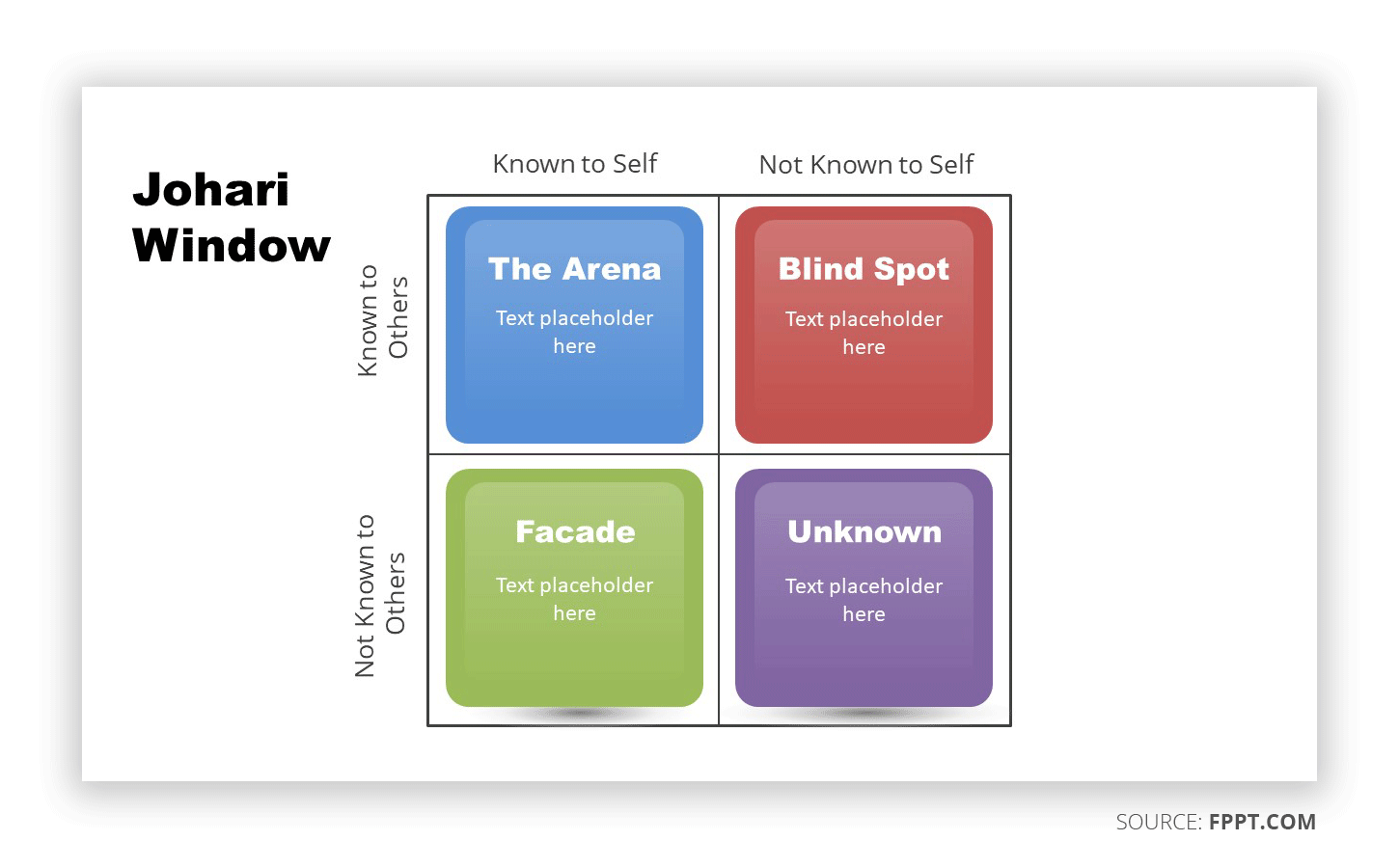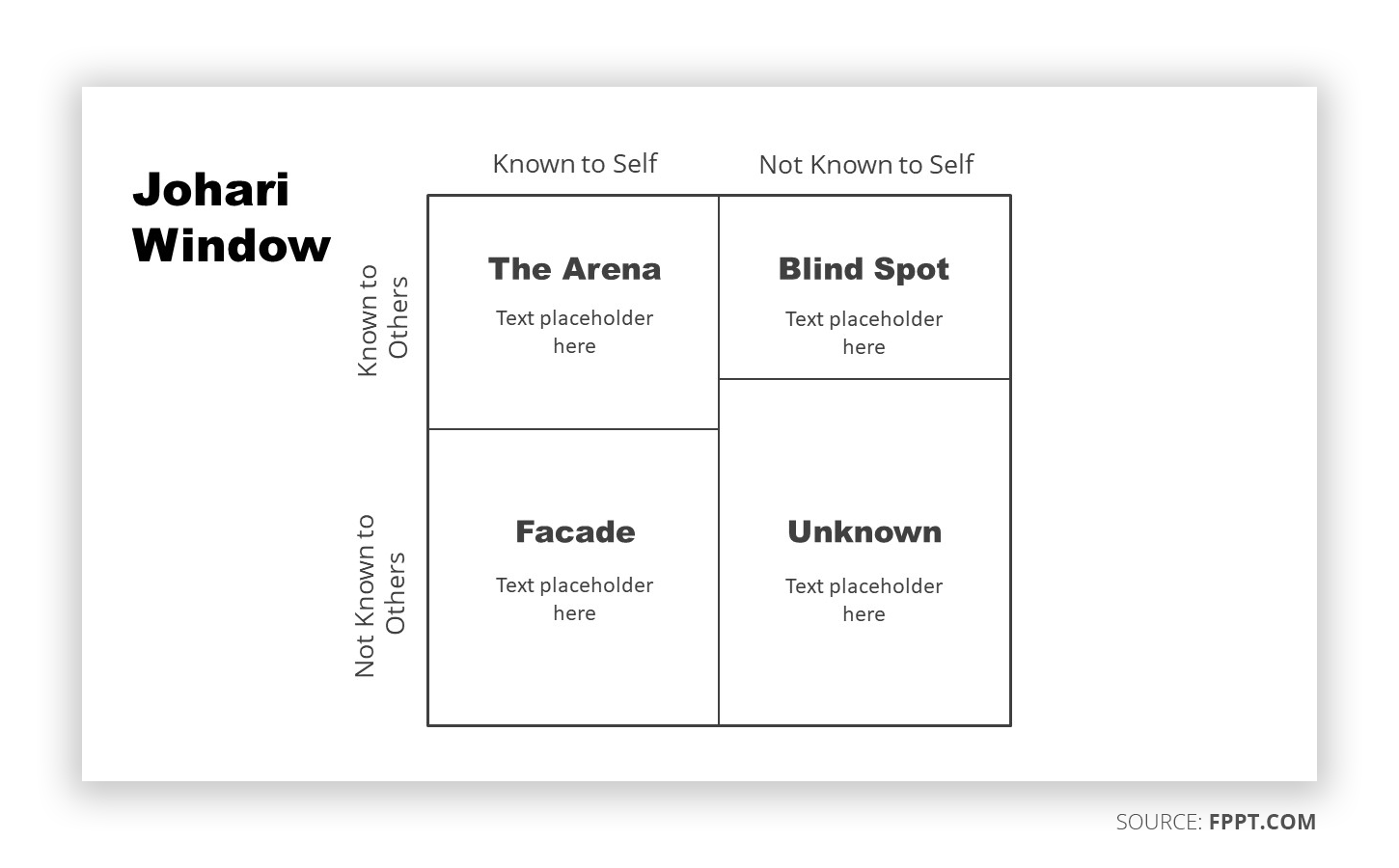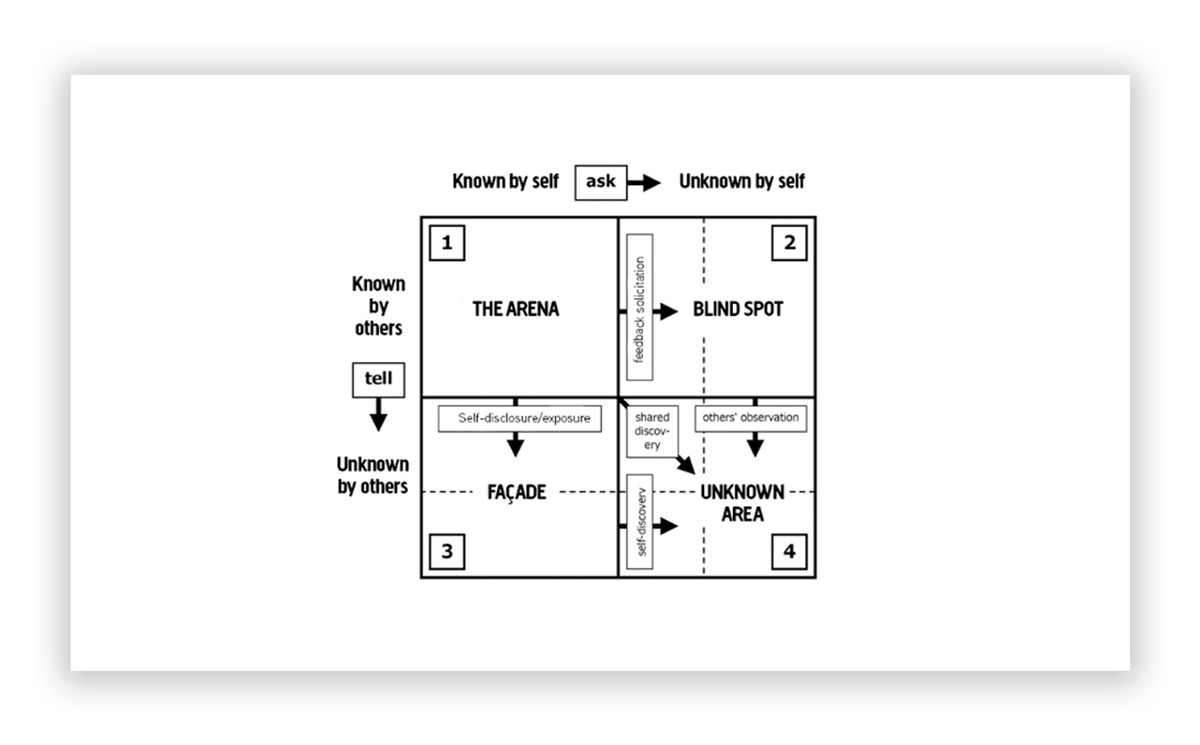Using the Johari Window Model for Stronger Relationships Within Your Team
Last updated on July 3rd, 2024
One of the foundations of good team relations and dynamics is trust. Your team must foster an atmosphere of trust and healthy communication in order to promote the growth of the group and of each individual. In your group, you must feel comfortable enough to open up with your team members, and they must also feel comfortable providing you with constructive feedback.
A practical way to visualize and illustrate your team’s dynamics based on this mutual trust is the Johari Window model. With this tool, you can gain a better understanding of how you and your team members interact with one another, and it can guide you on how you can improve your communication and interpersonal relationships within the group.
What is the Johari Window model?

The Johari Window model is a tool to help you visualize the level of open communication that you have within your team. The term Johari comes from the first names of its two creators, American psychologists Joseph Luft and Harry Ingham. They devised the model back in 1955 to assess group dynamics at the University of California, Los Angeles.
Now, the model is used by various sectors and organizations as a tool to improve their members’ self-awareness and personal development and their teams’ communications, interpersonal relationships, and overall group dynamics.
The Johari Window model diagram
There are two factors at work in the Johari Window model: information that is known to yourself, and information that is known to others. These two factors divide the diagram into four area quadrants, or panes of a window. The four quadrants are:
- The Arena – Known to self, and known to others
- The Blind Spot – Not known to self, but known to others
- The Facade – Known to self, but not known to others
- The Unknown – Not known to self, and not known to others
The types of information that go into these quadrants may include behaviors, skills, motivations, aspirations, ideas, and other details relevant to the team. They may also either be positive, negative, or just neutral attributes.

The diagram above shows a standard representation of the Johari Window where all panes are of equal size. In practice, these panes will change in size to reflect the proportions of the different levels of information known within the group.
In this example, a newcomer to the group will have a small Arena because little has been openly disclosed among the team, and they are also yet to discover their place within the team. Thus, the Unknown quadrant is the predominant area in this Johari Window.
As time passes by and the newcomer starts getting integrated into the group, the Arena slowly increases in size as the members get to know more about them, either by simple exposure or by self-disclosure.
The 4 quadrants
The Arena
The Arena includes all the information that both you and other members of the group know about yourself. Because everybody knows about the things in this quadrant, it is also called the Open Area or the Free Area.
A bigger Arena quadrant for every member of the team is desired because this is the area that fosters healthy and open communication.
In this quadrant, there are no unknown particulars that may interfere with your relationships like secrets, conflict, and misunderstanding. Individuals with big Arena quadrants can communicate more openly and effectively, and in turn, they promote better dynamics within the group.
The Blind Spot
Everybody has their own Blind Spot, or the attributes that other people know about you but you yourself may not be aware of. These blind spots can either be positive or negative qualities. For example, you may have a tendency to talk over somebody else during a meeting, or maybe you lighten up the mood every time you enter the room.
The Blind Spot quadrant is not a productive space to work and communicate from because it leaves you with a feeling of being kept out of the bubble. A sizable Blind Spot quadrant may mean that your organization currently does not have a culture of openness where others feel comfortable giving constructive feedback.
Especially if it includes negative attributes that you need to work on, a big Blind Spot pane stifles your self-awareness and opportunity for growth and improvement.
The Facade
On the flip side, the Facade is the quadrant for things that you know about yourself but prefer not to disclose with others. Sometimes, this quadrant is also called the Hidden Area.
Of course, it is only natural to keep personal information hidden and private from others. However, work-related information (like your skills, strengths, and weaknesses) is valuable and important to be shared with your team members.
The Unknown
The Unknown quadrant includes all your hidden attributes that neither you nor your team members know about. These may be traits that you are yet to discover about yourself, or dormant skills and abilities that you haven’t explored.
Increasing the size of the Arena
Following the Johari Window model, the ultimate goal is to maximize the size of each team member’s Arena Quadrant. A big Arena signifies a group relationship that trusts both ways, one that allows individuals to feel safe within the group to share information and constructive feedback.

In turn, this creates a dynamic with better understanding and stronger cooperation and trust among members.
Here are the ways that you and your team members can expand your Arena quadrants:
1. Feedback solicitation
By asking for feedback from others and accepting them earnestly, you can expand your Arena horizontally, thus shrinking your Blind Spot. This promotes self-awareness and helps you identify the areas where you can grow and improve.
2. Self-disclosure and exposure
Let others get to know you through frequent healthy communications and self-disclosure. This expands your Arena vertically, breaking down your Facade. As with feedback solicitation, your organization must create a culture where you feel safe sharing with your teammates.
3. Shared discovery
When both you and your group members learn something new about yourself, this greatly affects your Arena by expanding it diagonally, reducing the area of all other quadrants, including the Unknown.
JoHaRi PowerPoint Templates
If you are looking to prepare presentations to present a JoHaRi Window model, then the JoHaRi presentation templates and slides can be helpful. The free JoHaRi PowerPoint template provided by SlideModel can be a good starting point to prepare presentations. It contains an editable presentation template for PowerPoint and Google Slides that you can use for free.
In summary
The Johari Window model is a simple yet useful tool to help assess your group dynamics and understand some ways how you can improve the professional openness within your team. Any team who’s looking to better their interpersonal relationships can rely on the Johari Window model to jumpstart their individual and group development.
